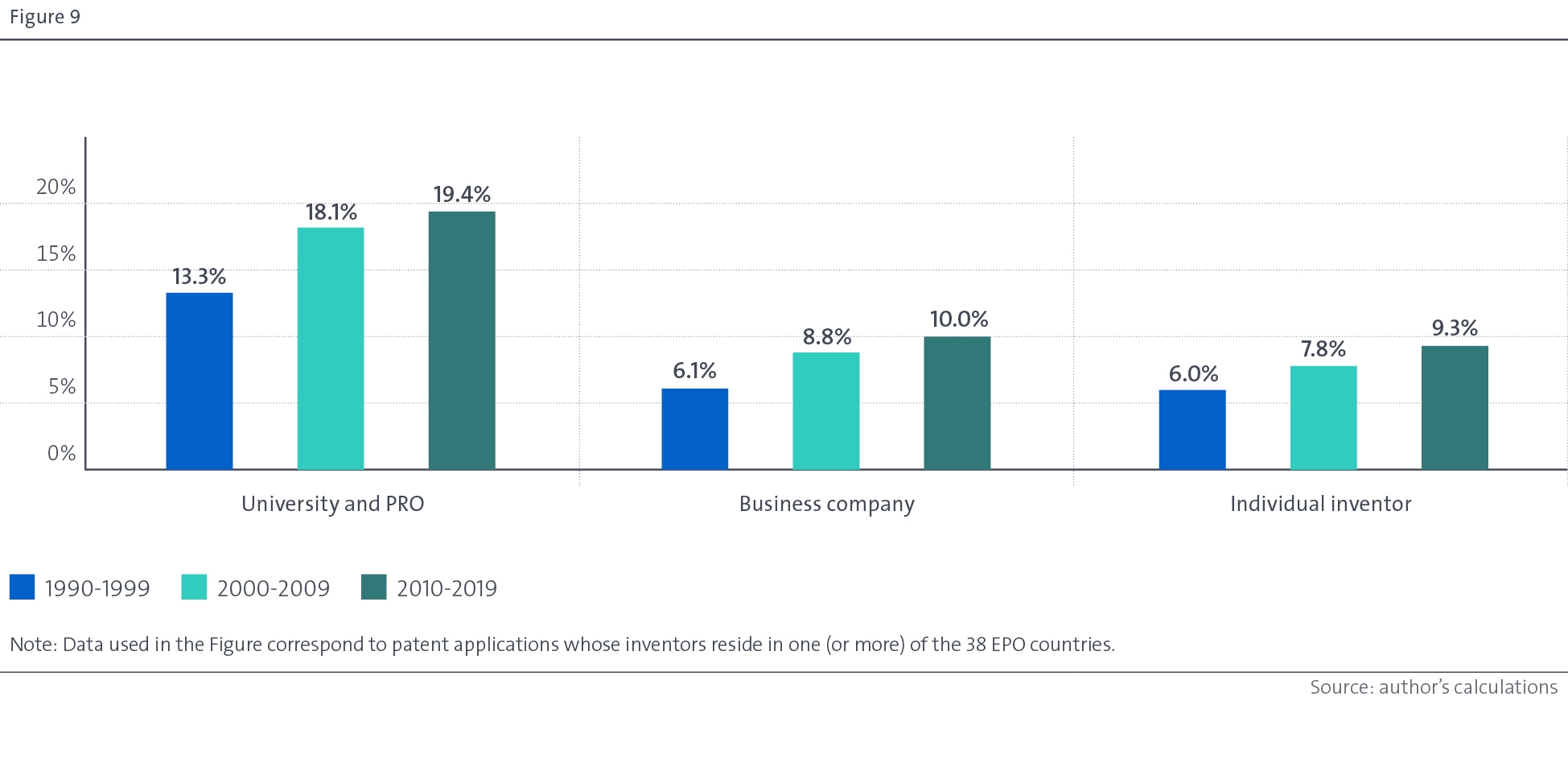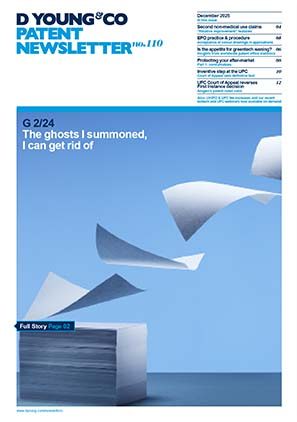Women’s participation in inventive activity - a recent EPO study
It has long been understood that women are under-represented in a vast number of industries, including many areas of science and technology. For example, a 2017 report by the Organisation for Economic Co-operation and Development (OECD) found that women accounted for only around 37% of new entrants into tertiary-level science programs, less than 20% of entrants into tertiary-level computer science programs, and only around 18% of engineering entrants. In November 2022 the European Patent Office (EPO) published a study assessing the degree to which women are represented in inventive activities. This comprehensive study published by the EPO provides an opportunity to consider whether, and to what degree, this under-representation of women in research and industry translates into under-representation of women in inventive activity.
The EPO study calculates a women inventor rate (WIR) – the percentage of women inventors on European patent (EP) applications – based on inventor data from all applications filed at the EPO between 1976 and 2019. The nearly four million applications considered include applications from across all 38 states of the EPO, and provide information about over four million inventors. Therefore, this study provides an unprecedented insight into the inventive activity of women across the EPO. By attributing gender to inventors based on their names (necessary because patent applications do not capture information on inventors’ genders), the study explores various factors which may affect the WIR.
WIR across the EPO
The EPO study finds that the WIR, while steadily increasing, is still well below 50%: the WIR in 2019 was determined to be as low as 13%. The study notes that this is significantly lower than the WIR in some other countries, with the People’s Republic of China and the Republic of Korea being highlighted as having a significantly higher (although still far below 50%) WIR. Perhaps more notable, however, is the significant variation in the WIR within the EPO. For example, figure 3 (below) shows a difference of 22.6 percentage points between the highest WIR over the period of 2010-2019 (30.6% in Latvia) and the lowest WIR over the same period (8% in Austria). Austria is at the bottom of the ranking, despite being among the top ten patenting countries at the EPO.

The study proposes two possible explanations for this variation in the WIR between different contracting states, both of which are supported by the data:
The WIR differs by technological sector (figure 7 below), with the WIR in chemistry (especially in biotechnology and pharmaceuticals) being far higher than in any other sector. The study found that the WIR was generally higher in countries for whom a larger proportion of patent applications are in the chemistry sector.

The WIR is also higher for patent applications from universities and public research organisations (PROs) than for applications from companies (figure 9, below). The study found that the WIR was generally higher in countries for whom a larger proportion of patent applications were from universities and PROs.

Leaking pipeline
The study considers whether the low WIR across the EPO can be explained by the so called “leaking pipeline” effect, whereby women face increasing obstacles when progressing in science, technology, engineering and mathematics (STEM) careers.
However, while it is likely that the leaking pipeline phenomenon goes some of the way to explaining the low WIR, it does not fully explain the low WIR. This is evident from the fact that the WIR is significantly lower than women’s shares of research & development (R&D) personnel, researchers, and managers across the EPO (figure 5 below). This shows that there must be other factors at play.

Geographic constraints
Another possible explanation identified in the study was that women may, on average, be more geographically constrained than men. As mentioned above, the study found significant variation in the WIR between EPO contracting states. In addition to this, the study also found there to be notable variation in the WIR between different regions within EPO countries. For example, the study found that most large national innovation hubs (such as London) have a WIR which is above the national average, or at least very close to it.
The study proposes a number of possible explanations for this regional heterogeneity. In some cases, it is possible that very high WIR in some peripheral regions may be statistical artefacts (owing to relatively low patenting activity in those regions). When it comes to the observation of the high WIR in national innovation hubs, however, the authors of the study considered that this might be caused by some of the same factors that cause the national variation in the WIR – national innovation hubs may show a higher degree of specialisation in technological fields where women inventors are relatively well represented, and more weight might be carried by patents from universities.
The authors of the study also suggested that part of the explanation may lie in genuine sociological factors, such as a higher acceptance of women in professions dominated by men. In addition, the study notes that previous research (Delgado et al, 2019) has found that women, relative to men, are more geographically constrained in their ability to access knowledge than men – for example, women are less likely to move across locations and participate in conferences and seminars away from their residence. The authors speculate, therefore, that the locational advantages that come from living or working in a national innovation hub such as London (including physical proximity to other inventors and researchers) may be more important for women than for men. Interestingly, the study also found the WIR to be higher for migrant women inventors than for native ones. This suggests that support for international mobility may give women more opportunities to engage in inventive careers.
Why should we care?
Researchers’ incomes are strongly tied to their contributions (Bell et al, 2019), so a low WIR is likely to contribute to income inequality. Yet the EPO study found evidence that, while women tend to produce fewer patents than men, their inventions are as good and sometimes better than those of men. In addition, it has been found that women’s patents are more likely to focus on women-specific health problems, while men’s patents are more likely to focus on men-specific health problems (Koning et al.). Therefore, a low WIR translates into reduced breadth and inclusivity in technology, potentially increasing inequality in the healthcare system, for example.
Moving forward
The study notes that fields where the WIR is especially low (such as mechanical engineering, which had a WIR of 5.2% over the period from 2010-2019) could learn from those with a comparatively higher WIR (such as chemistry, where the WIR over the same period was 22.4%). Likewise, companies could learn from the work practices and cultural acceptance in universities and PROs. In addition, the study found that the presence of women in patenting increases with the importance of teamwork, which hints than increased teamwork and collaboration is likely to increase the WIR. The authors also suggest that improving the international mobility of women scientists could help to improve the WIR.
References
EPO report “Women’s participation in inventive activity - Evidence from EPO data”, published November 2022: https://dycip.com/epo-womeninip.
Please refer to the EPO report for a full list of citations and further information about source data for figures.
The authors of the EPO study were Valentina Di Iasio, Francesco Lissoni, Ernest Miguelez, Gianluca Tarasconi, Yann Ménière, Muzio Grilli and Ilja Rudyk.
We thank the EPO for giving us permission to reproduce figures from the report.

